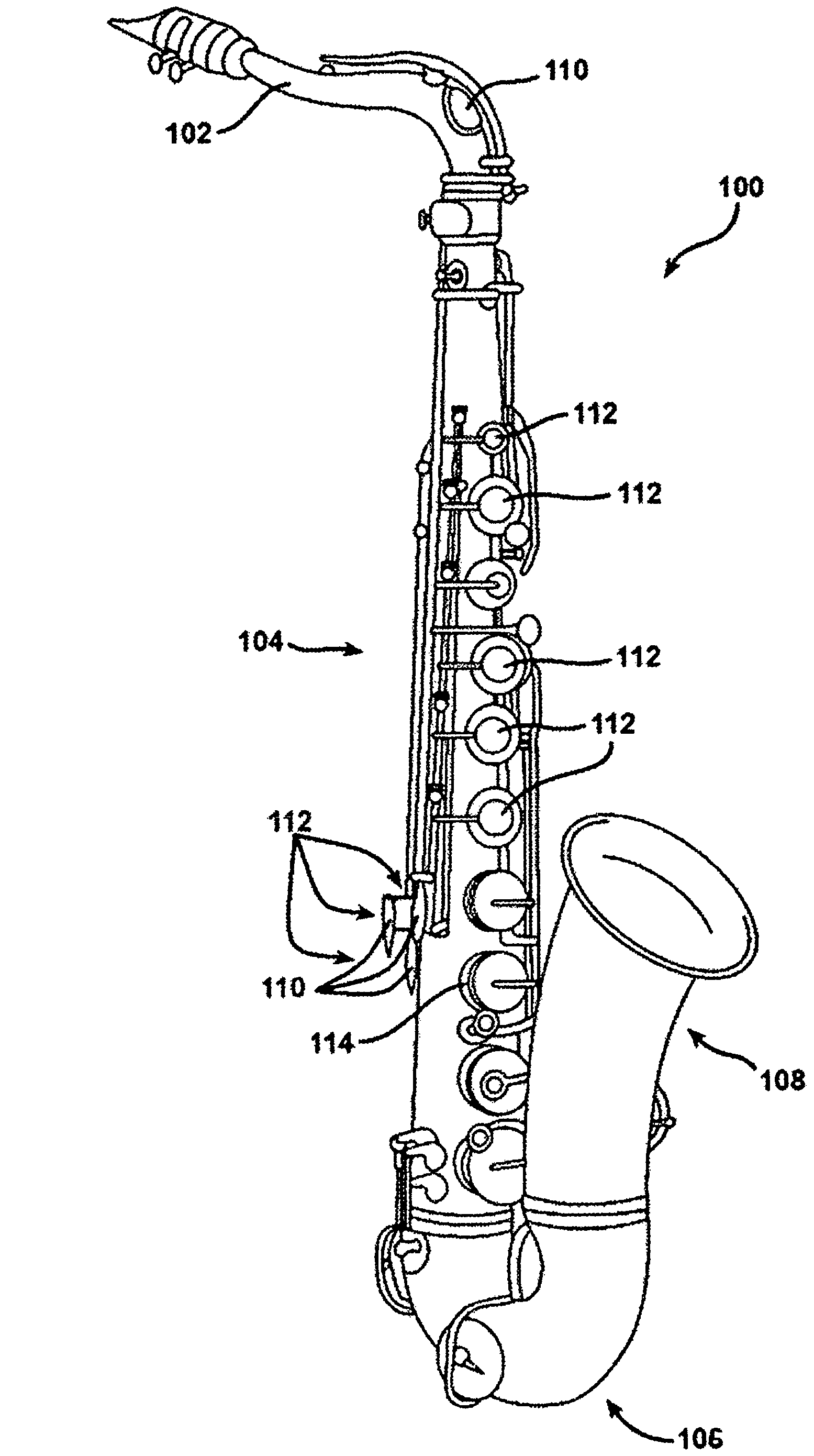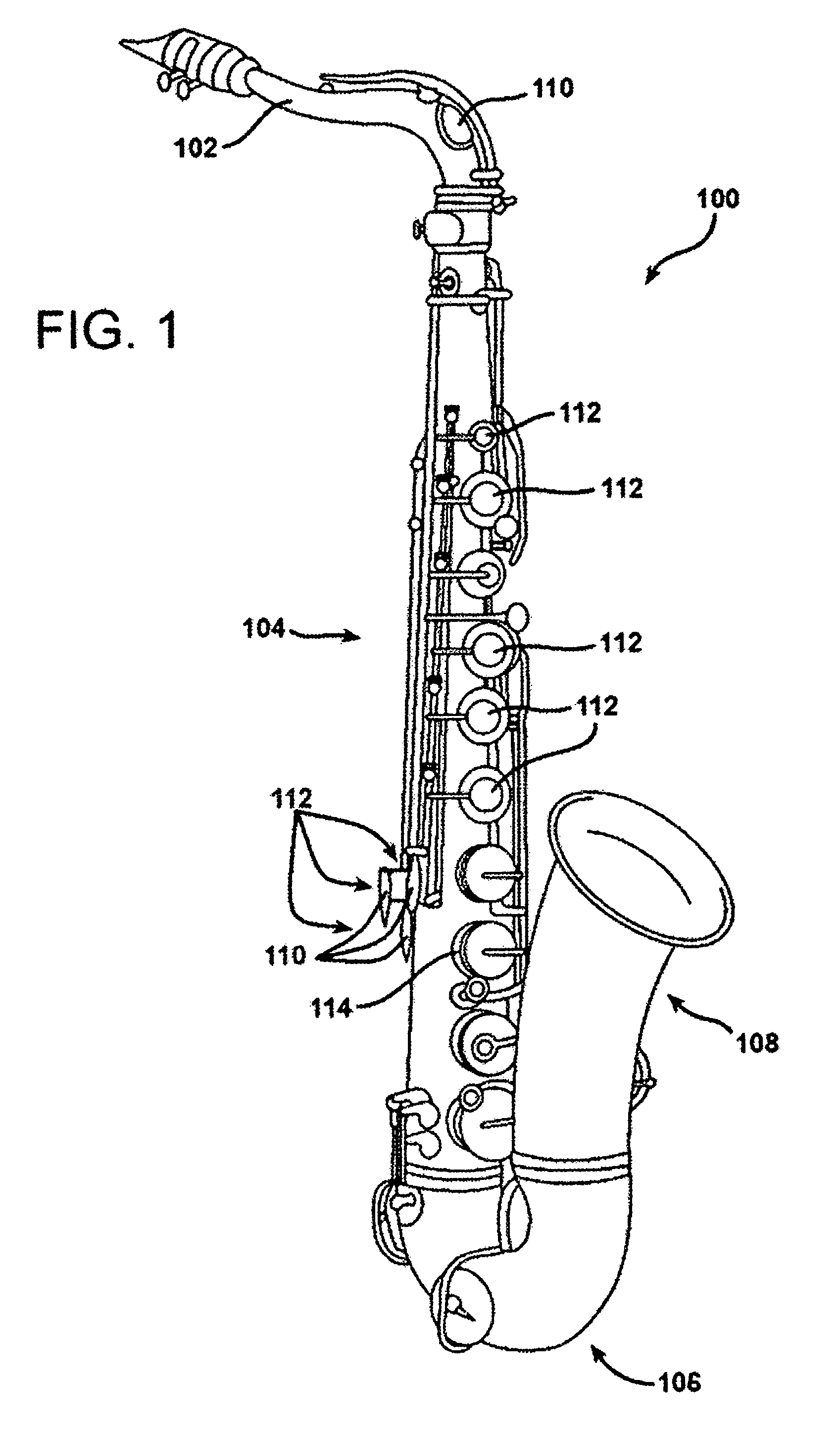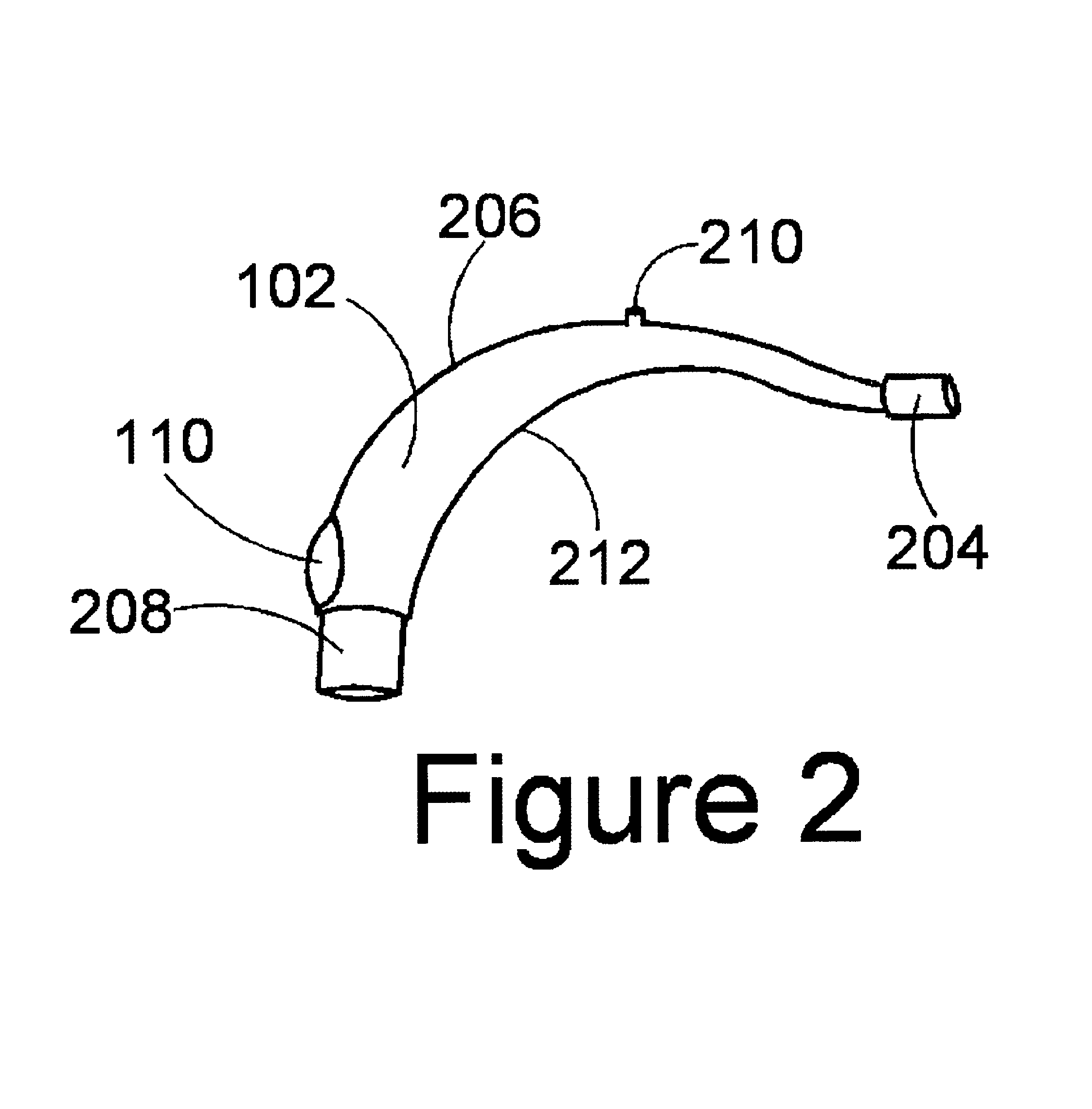Woodwind instrument
a woodwind and instrument technology, applied in the field of woodwind instruments, can solve the problems of inability to maintain the correct pitch of woodwinds, inability to adjust to the sound of woodwinds, and difficulty in adjusting the pitch of woodwinds, so as to improve the tonal characteristics of woodwind instruments
- Summary
- Abstract
- Description
- Claims
- Application Information
AI Technical Summary
Benefits of technology
Problems solved by technology
Method used
Image
Examples
examples
[0066]In order to demonstrate the practice of the present invention, the following examples have been prepared. The examples should not, however, be viewed as limiting the scope of the invention. The claims will serve to define the invention.
example i
[0067]The addition of stones to a saxophone has a dramatic improvement in the various sound qualities of the saxophone. Several tests were performed to illustrate the effect of the sound improvement. The results are summarized in Table 1. The testing involved using a 35670A Hewlett Packard Spectrum Analyzer with sound being recorded through calibrated condenser microphones made y ACO, ¼ inch model 7012 and ½ inch model 7017. The frequency range of the Spectrum Analyzer was set at 0 Hz to 3.2 kHz, which could measure the fundamental tone and the next six overtones or harmonics. Sound was measured in Hz or cycles per second of each fundamental tone and overtones as well as the volume amplitude of each fundamental tone and overtones. The tests were conducted with the results recorded while playing a high B note on a tenor saxophone according to the present invention.
[0068]In order to control deviation between tests, each test was conducted using one saxophone by one professional saxoph...
example ii
[0073]In another example, saxophones were again tested using a semi-precious stone instead of mother-of-pearl. All saxophones were tuned to a middle note on the horn, making sure that the horn was in very close proximity to acceptable and standard pitch on that specific note just prior to each testing period. Two problem notes (notes that when played exhibited a higher frequency than what is desired) were then played and tested for pitch using mother-of-pearl on the finger buttons, and again using semi-precious stones on the finger buttons. Each note was played 30 separate times, and the frequency was recorded. The average frequencies for each group of 30 frequencies were calculated. Testing was done by professional musicians. The results are displayed in Table II, where all frequencies are given in Hz.
[0074]
TABLE IINoteMother or PearlSemi-PreciousPlayedStandard HzAverage HzStone Average HzCannonballB587.33601.7588.5AltoD349.23359.0349.6SaxophoneCannonballA392.00399.0392.0TenorD261....
PUM
 Login to View More
Login to View More Abstract
Description
Claims
Application Information
 Login to View More
Login to View More - R&D
- Intellectual Property
- Life Sciences
- Materials
- Tech Scout
- Unparalleled Data Quality
- Higher Quality Content
- 60% Fewer Hallucinations
Browse by: Latest US Patents, China's latest patents, Technical Efficacy Thesaurus, Application Domain, Technology Topic, Popular Technical Reports.
© 2025 PatSnap. All rights reserved.Legal|Privacy policy|Modern Slavery Act Transparency Statement|Sitemap|About US| Contact US: help@patsnap.com



